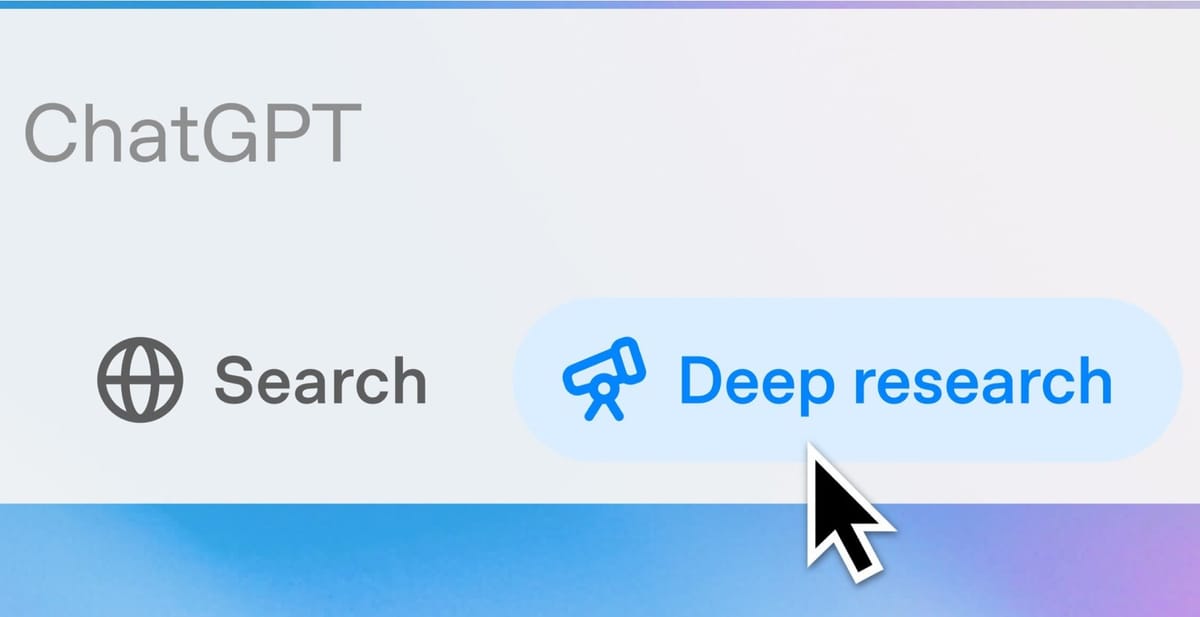
OpenAI says it has begun rolling out its Deep Research agent out to every ChatGPT user, including those on the Free tier. To make this possible, the company is introducing a new, lightweight version of Deep Research, built on its cost-efficient o4-mini model, designed to preserve depth while increasing capacity.
Key Points:
- Deep Research now accessible to Free users (5 tasks/month) via a new lightweight model
- Plus and Team users get 25 tasks/month; Pro users get 250, split between full and lightweight versions
- Automatically switches to lightweight model when full-version limits are reached
Deep Research is OpenAI’s most agentic feature yet. First introduced to Pro users earlier this year, it was built for people who need comprehensive, accurate, and fully cited answers to complex questions—think policy analysts, researchers, financial advisors, and meticulous consumers. Unlike standard ChatGPT conversations, Deep Research autonomously browses the public web, reads, synthesizes, and outputs structured reports. It does the kind of multi-step, hours-long research that typically lands in a slide deck or memo. Since its introduction, it has quickly become one of ChatGPT's standout features.
We've noticed many of you love using deep research, so we’re expanding usage for Plus, Team, and Pro users by introducing a lightweight version of deep research in order to increase current rate limits.
— OpenAI (@OpenAI) April 24, 2025
We’re also rolling out the lightweight version to Free users.
Now, it’s available to Free users with a limit of five lightweight tasks per month. That’s the same Deep Research interface—just powered by a smaller, faster, and cheaper model that returns slightly more concise results. For paying users, this lightweight version effectively doubles monthly usage. Here's the breakdown:
- Free – 5 tasks/month using the lightweight version
- Plus & Team – 10 tasks/month, plus an additional 15 tasks/month using the lightweight version
- Pro – 125 tasks/month, plus an additional 125/month using the lightweight version
- Enterprise – 10 tasks/month
If a user exhausts their full quota, ChatGPT seamlessly defaults to the lighter model.
It’s a smart compromise. The original Deep Research feature, while powerful, is compute-intensive and expensive to serve. The new version, powered by o4-mini, preserves the core functionality—multi-step reasoning, real-time browsing, document parsing—while trimming the fat. Responses are a bit shorter, but still include citations and structured logic. For users, it’s a graceful fallback. For OpenAI, it’s a scalable way to widen adoption without compromising experience.
This rollout reflects a broader trend in OpenAI’s product strategy: increasing access to agent-like features while managing infrastructure load. It’s not just about building smarter tools, but about figuring out how to distribute them responsibly, equitably, and cost-effectively. And Deep Research is perhaps the most tangible example of what an “AI agent” can already do in everyday use—synthesizing market research, comparing graduate programs, or helping decide where to move next.
The company says Enterprise users will get access next, matching the Team tier’s limits. The tool is live on the web interface and will soon appear across ChatGPT’s mobile and desktop apps. OpenAI says it plans to expand Deep Research’s reach into private data and premium sources, paving the way for even more personalized and high-stakes uses.

